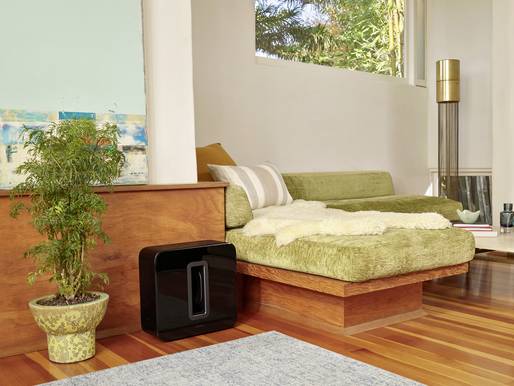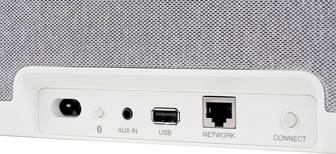Individual soundscapes: multi-room systems
This text is machine translated.
Whether for listening to music, podcasts or audio books - with a multi-room system, you can enjoy maximum flexibility. The ability to move from room to room and enjoy different or identical audio content without interruption opens up new dimensions of listening comfort. There are a large number of manufacturers offering different solutions. Compatibility therefore plays a particularly important role.
Not all streaming services are supported by every system and not all hardware can be combined with each other. However, there are other aspects to consider when buying such a sound system. Our guide offers you a structured insight into the world of multi-room systems. We will introduce you to the basic functions, different system types and the most important selection criteria.
A multi-room system makes it possible to play audio content such as music, podcasts and audio books in different rooms. For this purpose, it consists of network-compatible speakers and a control device. This can be a smartphone or tablet with a corresponding app installed. Some systems offer the option of using virtual assistants such as Amazon Alexa, Google Assistant or Apple's Siri to control audio playback by voice command, as is common in the smart home sector. Good to know: With a multi-room system, you can play the same thing in all rooms or have different content played in each listening zone.
The speakers of a multiroom system are first integrated into the home network. You can either use wired speakers, which you connect to your router via Ethernet cables, or you can use Wi-Fi. The latter is the more convenient solution, as you don't have to lay any cables.
Your multiroom system is controlled via an app on your smartphone or tablet or (if possible) via a voice assistant. You use the app to set up the speakers and select sources for music and other audio content. These are then sent digitally via the network to the corresponding speakers. You can play music in one, several or all rooms. In order to synchronize, the speakers buffer the received audio data for a short time and play it back simultaneously. As the speakers are at different distances from the router, latency may occur later on. However, today's multi-room systems are able to detect these delays and correct them automatically so that the sound remains synchronized in all rooms. You can adjust the volume of the individual speakers individually via the app to adapt the sound to your requirements.
Multiroom systems can be open or closed. Closed systems are characterized by the fact that they can only be connected to products from the same manufacturer. There is a standardized user interface, which greatly simplifies setup. In addition, all components are precisely matched to each other. The disadvantage is that the devices are often not compatible with hardware from other manufacturers. Well-known examples are multi-room systems from Sonos, Denon and Teufel.
There are also systems that use open platforms such as Google Chromecast or Apple AirPlay. This allows you to combine devices from different manufacturers individually. However, the setup is sometimes not as easy as with closed systems. Important: There are also manufacturer-specific systems that support these platforms. Musiccast from Yamaha, for example, works with AirPlay so that you can stream music from Apple devices via it.
What are the advantages of a multi-room system? A multi-room system is a convenient solution for enjoying music, podcasts or audio books in several rooms. It is not necessary to install an audio system in every room, which would be complex and expensive. The system can also be conveniently controlled via smartphone, tablet or voice assistant. Multiroom systems also offer a great deal of flexibility, as you can play both the same and different audio content and make individual settings for each speaker. Wireless multiroom speakers are also particularly easy to install. Setup via WLAN is done quickly. What's more, this connection method makes it possible to relocate the speakers at any time. Expanding the system is also no problem. If you buy additional speakers, simply integrate them into the network via WLAN and assign them to either existing or new listening zones.
There are several criteria to consider when choosing a multiroom system, with compatibility playing the most important role. Closed systems, such as those from Sonos, Denon or Teufel, only work with the manufacturer's own products, but all components are perfectly matched and installation is straightforward. Open systems allow you to combine devices from different manufacturers, giving you more flexibility, but may require more effort to set up. Consider which type of system best suits your requirements and preferences.
Another important aspect is the streaming services supported, for example Spotify, Apple Music or Amazon Music. A system that does not allow you to stream the content of the platforms you use would severely limit you. Connectivity is also a decisive factor. This means whether the system offers additional connectivity options such as Bluetooth, Apple AirPlay or Chromecast. If this is the case, even more devices can be integrated. If you want to control your multiroom system via voice command because you already use Amazon Alexa or similar smart home services, for example, check whether the respective assistant is supported.
Of course, the audio quality must also be right. There are definitely differences in terms of sound between the various multiroom speakers. The size, shape and design of the speakers have a significant influence on this.
The speakers should also fit in well with the interior and not take up too much space.
The setup process for a multiroom system may vary in detail depending on the manufacturer and type, but the basic steps are always the same. The first step is to determine in which rooms you want to install speakers. In the case of a WLAN system, you must ensure that your WLAN network offers sufficient coverage and stability in these areas. Then place the speakers in the desired locations and connect them to the power supply. Then connect the speakers to the network (via Wi-Fi or LAN cable), download the app to your smartphone or tablet and open it. The speakers are normally recognized automatically by the app. Then follow the further instructions to add and configure the speakers. You can assign them unique names and create listening zones that cover individual or multiple rooms. Finally, connect the system to your favorite streaming services (Spotify, Apple Music, etc.) within the app so that you can access your libraries and playlists. You can also play audio content that you have stored locally on your mobile device or on a NAS via the multi-room system.
What is the difference between a multiroom system and a soundbar?
A multiroom system consists of several speakers that are distributed across different rooms and either play the same or different content everywhere. A soundbar, on the other hand, is a compact speaker system that is reserved for use in a single room and is primarily used to improve the sound of televisions. However, some soundbars can be integrated into multi-room systems, such as models from Sonos.
Can I expand a Multiroom system at a later date?
Yes, modern multiroom systems can usually be expanded without any problems. It is possible to connect additional speakers to the system via WLAN or (if supported) Bluetooth. Some manufacturers also offer special network components with which you can make a stereo or hi-fi system or passive speakers WLAN-capable and integrate them in this way. Please note, however, that with a closed system you are limited to products from the same manufacturer.
Which audio formats are supported?
The supported audio formats vary depending on the system and manufacturer, but most can play MP3, AAC and WAV files. Some systems also offer support for lossless formats such as FLAC for a better sound experience. This is advantageous if you not only want to listen to audio content via streaming, but also want to access data from locally stored libraries.



